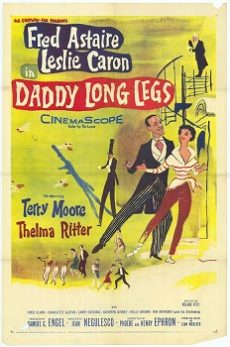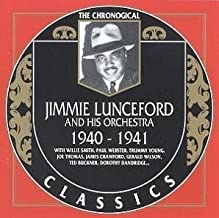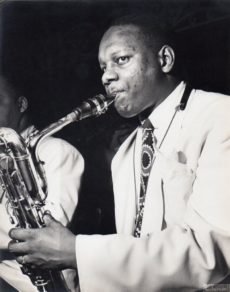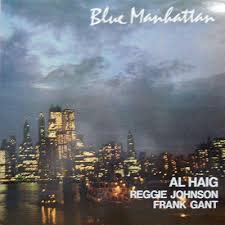
Daily Dose Of Jazz…
Reginald Foresythe was born on May 28, 1907 in London, England. He played piano from age eight and by the second half of the 1920s was working as a pianist and accordionist in dance bands in Paris, Australia, Hawaii, and California. He wrote music for films by D.W. Griffith and played in Paul Howard’s Quality Serenaders.
In 1930 Foresythe moved to Chicago, Illinois, wrote arrangements for Earl Hines and music for Paul Whiteman. Hines made one of his songs, Deep Forest, a part of his repertory, while Louis Armstrong, Fats Waller, Adrian Rollini, and Hal Kemp recorded his compositions. He worked in New York City in 1934–35, arranging for Whiteman and recording with Benny Goodman, John Kirby, and Gene Krupa.
Returning to London, Reginald assembled a studio recording group called The New Music of Reginald Foresythe. Between 1933-1936 he recorded for British Columbia and British Decca, usually spotlighting his jazzy tone poems. Among the more well known were Serenade to a Wealthy Widow, Garden of Weed, Dodging a Divorcee, and Revolt of the Yes-Men. His recordings featured reeds and sax, but no horns.
1935 saw Foresythe assembling a one-off session in New York City which featured Benny Goodman and Gene Krupa recording four of his compositions. He also recorded a number of piano solos and piano duets with Arthur Young that included at least three medleys and four arrangements of St. Louis Blues, Tiger Rag, Solitude and Mood Indigo for H.M.V. in 1938.
After serving in the Royal Air Force during World War II, he accompanied vocalists and played solo piano in London in the 1950s. He collaborated with songwriters Andy Razaf and Ted Weems, composing Be Ready with both, Please Don’t Talk About My Man with Razaf, and He’s a Son of the South with Razaf and Paul Denniker. Pianist, arranger, composer, and bandleader Reginald Foresythe passed away in relative obscurity in London on December 28, 1958.
More Posts: arranger,bandleader,composer,history,instrumental,jazz,music,piano

Hollywood On 52nd Street
Something’s Gotta Give was composed by Johnny Mercer for his friend Fred Astaire who starred in the 1955 film Daddy Long Legs. It is the love song duet between him and Leslie Caron. The song playfully uses the irresistible force paradox – which asks what happens when an irresistible force meets an immovable object – as a metaphor for a relationship between a vivacious woman and an older, world-weary man. The man, it is implied, will give in to temptation and kiss the woman.
The film also stars Terry Moore, Thelma Ritter, Fred Clark, and Ray Anthony who appear as himself with his orchestra. Filming took place on location at 20th Century Fox Studios in Hollywood and the Andrew Carnegie Mansion in Manhattan.
The Story: On a trip to France, millionaire Jervis Pendleton III (Astaire) sees an 18-year-old girl Julie Andre (Caron) in an orphanage. Immediately enchanted with her, but mindful of the difference in their ages and what the press may report should his involvement be discovered, he anonymously sponsors her to attend a fictional college in New England. She writes him letters, which he doesn’t read. After 3 years, he goes to visit her at a dance, not telling her that he is her benefactor. They fall in love, but the usual movie-type difficulties get in the way before they can get together at the end.

Daily Dose Of Jazz…
Earl Malcolm “Jock” Caruthers Sr. was born on May 27, 1910 in Monroe, Mississippi and studied at Fisk University in the 1920s. He began playing in Bennie Moten’s ensemble in 1928.
Working in St. Louis, Missouri early in the next decade with Dewey Jackson and Fate Marable, Jock then joined Jimmie Lunceford’s band in 1932, recording often with the band. He remained a member of the orchestra until Lunceford’s death in 1947.
Following this he played with Joe Thomas and Ed Wilcox, and he worked locally in Kansas City through the 1960s. Saxophonist Earl Caruthers, who was a mainstay on the Kansas City jazz scene, passed away on April 5, 1971 in Kansas City, Kansas.
More Posts: history,instrumental,jazz,music,saxophone

Three Wishes
The Baroness asked Harry Carney what his three wishes would be and he replied:
-
-
“To be healthy.”
-
“To be happy.”
-
“For everyone to have eternal life and healthy minds.”
-
*Excerpt from Three Wishes: An Intimate Look at Jazz Greats ~ Compiled and Photographed by Pannonica de Koenigswarter
More Posts: baroness,clarinet,history,instrumental,jazz,music,pannonica,saxophone,three,wishes

Daily Dose Of Jazz…
Frank Gant was born on May 26, 1931 in Detroit, Michigan. His first gigs were with Billy Mitchell and Pepper Adams, and after working with Little John Wilson and his Merry Men at the Madison Ballroom, including four days backing Billie Holiday, he went on to join Alvin Jackson’s house band at the Blue Bird..
Gant recorded with Donald Byrd, Sonny Stitt, and extensively with Yusef Lateef in the late 1950s and then Red Garland before becoming a member of Ahmad Jamal’s trio from 1966 to 1976. As the house drummer at Detroit’s Club 12, with Jackson’s band, he backed Thelonious Monk and Charlie Rouse in September 1959. In the 1970s, he accompanied Jamil Nasser and Harold Mabern as the rhythm section for workshops run by Cobi Narita.
From 1955 to 1986 he recorded as a sideman or group member on twenty albums with the above-mentioned musicians, as well as several with Al Haig. There is no more information following this recording period about the drummer as he has never been a leader, however, at eighty-nine he may still be occasionally performing.
More Posts: drums,history,instrumental,jazz,music




